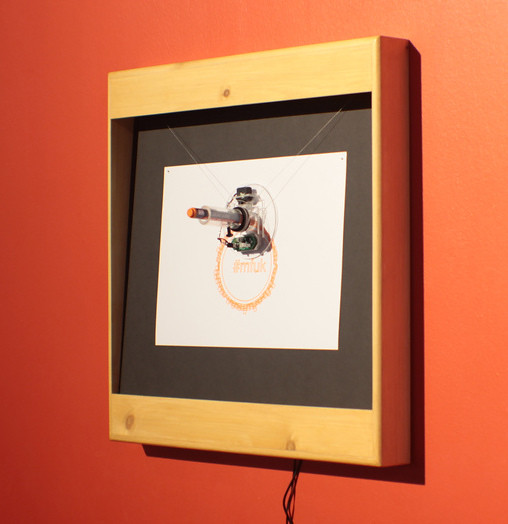Cursive Data: Drawing by Robots
CursiveData.co.uk converts real time data into slowly growing online visualisations that are simultaneously brought to life by drawing robots. Robot artists use new website to turn live data into art.
A Bristol-based engineer has found a new way to bring data to life – with robots. Since last year Matthew Venn’s ‘Polarbots’ have been drawing pictures on walls in response to energy use – the pictures change as the power goes up or down. But Venn realised any live data could be visualised this way and now with help from Bristol Council, he and his collaborators have built a website that transforms data into art in real-time: www.CursiveData.co.uk. The ever-changing pictures that result can be drawn by Polarbots or embedded in websites.
“The big difference between cursive data and other types of data visualisation is that cursive data provides continually growing visualisations, ones that respond to change.” – Matthew Venn
Any live data can drive Cursive Data visualisations but Venn’s focus is still on energy. He says, “energy is abstract and invisible but it is important that we notice it”. The team hopes that their live data art will help people waste less energy and be more aware of their greenhouse gas emissions. A grant from Bristol Council has allowed Venn to build a public Polarbot and work with a local artist to develop new ways to respond to energy data. A diverse team of programmers and engineers have collaborated on the project.

A robot drawing numbers of tweets at Newcastle maker faire
Venn will be talking about the project at Dorkbot (18 June 2013) and Pervasive Media Studio (21 June 2013). Programmers and artists will come together to develop new ‘pattern generators’ for www.CursiveData.co.uk at an event on 7 July 2013.
How www.CursiveData.co.uk works
Cursive data collects data from any web-based data source. Venn’s own home energy monitor is connected this way. When enough data has been collected it is passed to a pattern generator that adds new elements to the continually changing image. The pattern generators can be programmed to react in many different ways. One of the early patterns places leaves on a tree. The size of the leaves corresponds to the energy being generated by a solar power array that Cursive Data connects it to.
How Polarbots work
Polarbots draw by hanging a pen from wires that are controlled by motors. Their movement is determined by a Cursive Data ‘pattern generator’. As they move they can pull a pen across the wall, or lift it off the wall.

